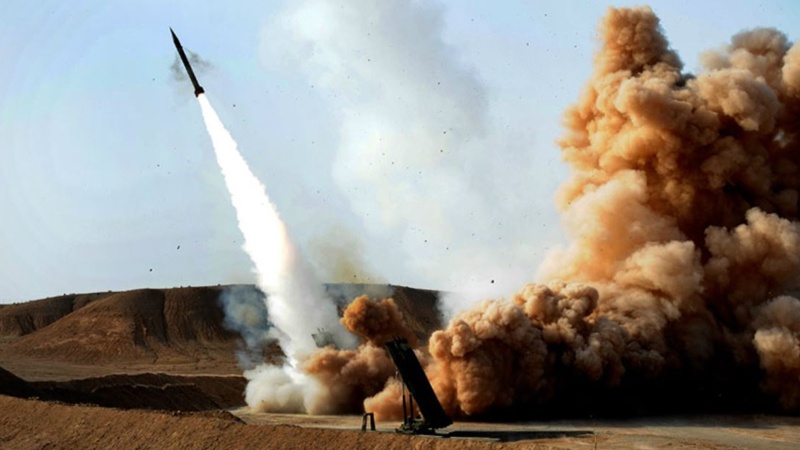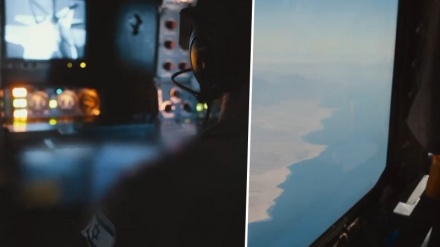Are the Yemenis capable of launching the Saudi strikes?
The popular Ansarallah Movement defending Yemen from the U.S.-supported state terrorism of Saudi Arabia, has made rapid strides in improving its missile and drone capabilities for justified retaliation against the crimes of the Riyadh regime and its accomplices.
The following is an article in this regard by London-based Canadian author Gwynne Dyer, titled: “Are the Yemenis capable of launching the Saudi strikes?”
U.S. Secretary of State Mike Pompeo – as part of his arrogant nature – has tried to deny the Ansarallah claim that the Yemeni group had carried out the spectacular September 14 strike on two huge Saudi Arabian oil processing facilities. Instead, he blamed Iran.
No surprise there. The way things are at the moment, if an incoming asteroid were about to strike Planet Earth, the United States would blame Iran. But there’s “no evidence” that the drones came from Iran. Pompeo is simply trading on the assumption that Yemenis are too ignorant to manage that sort of technology, so it must be Iran.
Saudi Arabia and the alliance of other autocratic Arab States that have been bombing Yemen since 2015 push the same line all the time. It goes down fairly well in Saudi Arabia, where most people look down on Yemenis for being poor and less well educated, but it isn’t actually true.
Within a year of the war’s start, the Yemenis began launching a few small ballistic missiles (with conventional warheads) back at Saudi Arabia, but the Saudis refused to believe they were doing it themselves. The Ansarallah, they implied, were too backward to upgrade the Yemeni air force’s old Soviet-made Scud missiles themselves. Iran must have helped them.
In fact, the Yemeni Air Force had Scud missiles for decades before the government collapsed in 2015, and technicians to service them. Some, maybe most of those technicians threw in their lot with the Ansarallah, and upgraded those Scuds by cutting them in half and inserting a larger fuel tank in the middle.
It changed their flight characteristic and made them very inaccurate, but it did extend their range enough to hit targets all over southern and eastern Saudi Arabia. And by mid-2017 the Ansarallah, who controlled most of Yemen, were making their own improved copies known as Burkan missiles.
The “Super-Scuds’ were more a morale booster than a war-winner for the Yemenis, who live under a merciless daily bombardment from the air. The current attacks on the Saudi oil facilities by the Yemenis would just be another morale-booster, even though it has temporarily cut world oil production by around 5 percent.
But was it really the Ansarallah? Most possible, since they certainly have the motive, and they may have the technology. They have used small drones in previous air strikes, and there are bigger drones available commercially that could do the damage seen at the Saudi facilities.
The biggest currently available is the Guardian, a monster that can carry a payload of 200 kg. It’s made by Griff Aviation, a Norwegian company whose Lakeland factory in Florida is producing one Guardian a day and selling them to industrial, agricultural and military clients.
It would be quite a trick for the Yemenis to acquire 10 of them (which is how many drones they say they used in their attack), but stranger things have happened. Or maybe they did get their hands on some military drones, which would certainly be up to the job.
Most of the land around the Abqaiq and Khurais oil facilities is open desert, and launching the drones would escape detection unless the Saudis were actively anticipating such an attack.
Who would launch them? There are a million Yemenis resident in Saudi Arabia, plus 2 million to 3 million Saudi citizens who suffer severe discrimination because they follow the Shi’ite version of Islam. There are even Sunni Saudi citizens who are sufficiently disaffected to attack the Wahhabi regime directly.
That’s a pretty large pool to fish in if you’re looking for local collaborators to smuggle the drones in and launch them — which is what the Ansarallah themselves say happened. In their statement claiming credit for the attacks, they express thanks for “co-operation with the honorable people inside Saudi Arabia.”
In view of these facts, Pompeo’s attribution of blame to Iran, later echoed by U.S. Energy Secretary Rick Perry, is just politics, not proof.
As Iran’s Foreign Minister Javad Zarif tweeted, “having failed at max pressure (anti-Iran trade sanctions), Sec Pompeo’s turning to max deceit.”
Fair comment indeed. U.S. President Donald Trump, for all his faults, doesn’t want a full-scale war with Iran, and neither does Saudi Arabia. It probably won’t happen.
AS/MG



